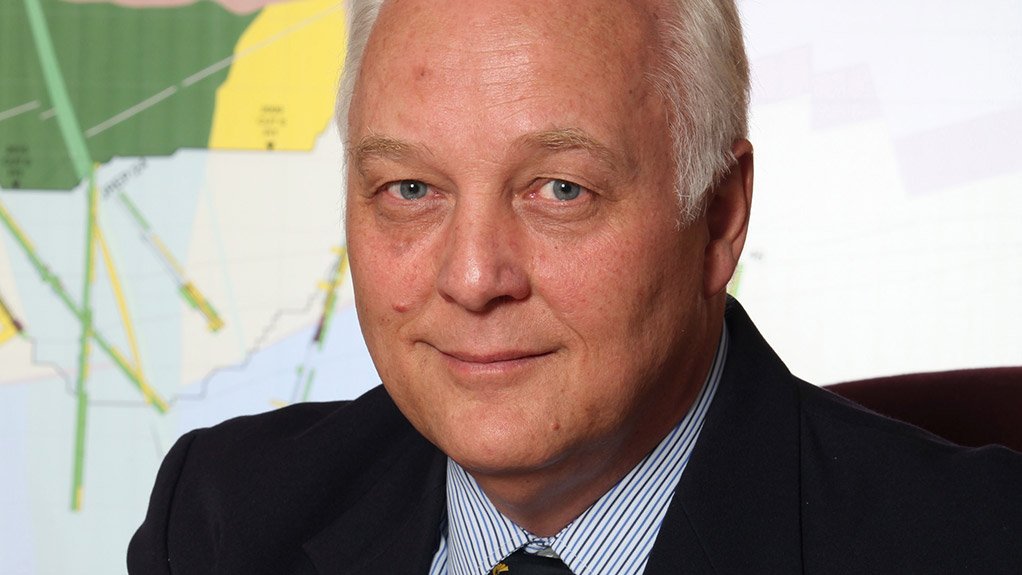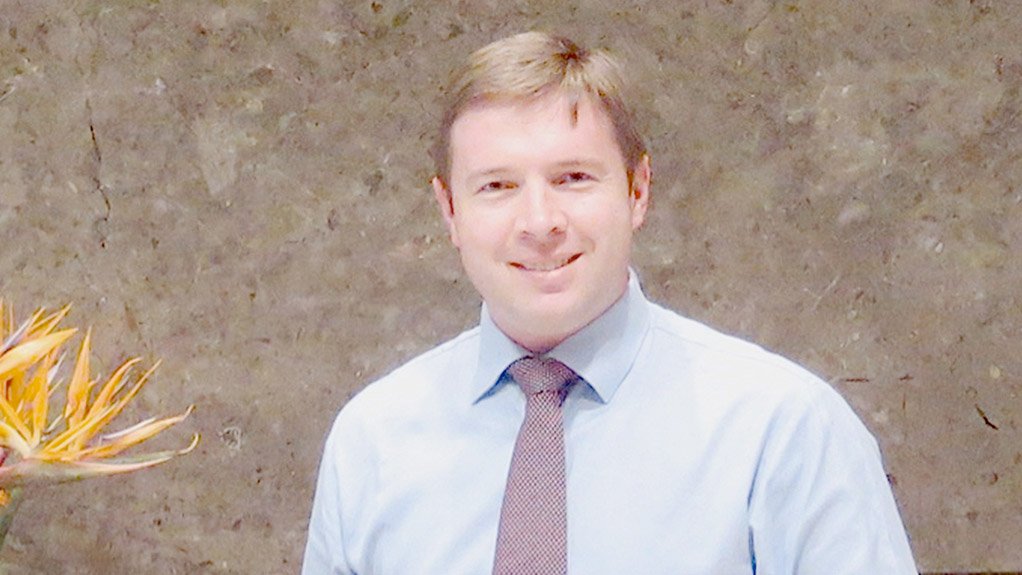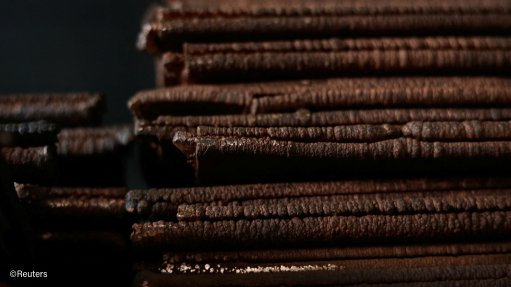Investors shift focus to adequate infrastructure, higher-grade deposits




FOCUS SHIFT SRK Consulting South Africa expects investor emphasis to shift to higher-grade iron-ore deposits
Photo by Bloomberg
HENNIE THEART Large low- to medium-grade deposits in equatorial Africa will only come into play when the infrastructure hurdle has been overcome
ANDREW VAN ZYL SRK Consulting SA forecasts that Africa will continue to produce iron-ore consistently over the next five years
The upsurge in iron-ore exports from South Africa and Africa in the past five years, largely driven by Chinese demand, has not only gradually diminished in the past year but has also caused a slowdown in African exploration and project development activities, says Hennie Theart, corporate consultant and partner of SRK Consulting South Africa (SA), a multidisciplinary firm of engineers and scientists.
“With the iron-ore market shrinking, owing to Chinese demand constrictions and uncertainty as to when and if the market will recover, the emphasis is expected to shift back to higher- grade deposits,” Theart tells Mining Weekly.
Investors’ initial focus will, therefore, be on projects located in regions with established rail and port infrastructure, or on deposits located close to the coast, which will reduce the required investment in infrastructure, he notes.
Theart adds that this may favour new projects in South Africa and, to some extent, projects in West Africa. Expansions, however, will be limited to existing and available rail and port capacity.
“Large low- to medium-grade deposits in equatorial Africa will only come into play when the infrastructure hurdle has been overcome.”
Further, several large deposits in Africa were identified during the upsurge in exploration activities over the past five years, says Theart, noting that most of these deposits contain shallow higher-grade ores, which can, to varying degrees, deliver a lumpy iron-ore product suitable for direct reduction.
These projects also have lower-grade, deeper ores that will require upgrading to deliver a fines product. These deposits are located in, for example, Guinea, Sierra Leone and Liberia, all in north-west Africa, and Cameroon, Gabon, and the Republic of Congo (Congo), in equatorial West Africa, says Theart.
Lower-grade iron-ore deposits are also being explored in southern Angola and northern Namibia, with the viability of a magnetite deposit in Mozambique also being investigated.
SRK Consulting SA associate partner Andrew van Zyl also cites the good progress made over the past few years on international iron-ore company Sundance Resources’ Mbalam-Nabeba iron-ore project, which spans Cameroon and Congo.
Meanwhile, Australian diversified mining major Rio Tinto’s $20-billion Simandou iron-ore project, in Guinea, also appears to have a greater likelihood of progressing, following the renegotiation of the company’s convention with the Guinea government earlier this year.
Van Zyl adds that some smaller iron-ore projects in the Congo, Mauritania and Liberia may proceed, but with a lower impact on overall supply. The failure of Exxaro to reach agreement on the logistical aspects of the Mayoko project with the government of the Congo, despite substantial progress and investment, highlights that this remains a challenging environment, he notes.
“Nevertheless, projects like Mbalam and Simandou have set valuable precedents and can be used as examples of successful government negotiation of mining and infrastructure conventions for other countries and companies, possibly to expedite their negotiations, devel- opment and financing.”
Van Zyl adds that, while new significant iron-ore supplies are unlikely to come on stream in the next five years – as most significant projects take longer to bring into production – SRK Consulting SA forecasts that Africa will continue to produce iron-ore consistently over the next five years.
“While SRK Consulting SA does not expect substantial growth on the continent, several projects will be required to replace mines reaching the end of their productive lives,” says Van Zyl.
Chinese Impact
Theart tells Mining Weekly that SRK Consulting SA has noted direct interest from China to find, control and dominate its own supply of iron-ore from African countries, thereby easing the country’s dependence on free- market suppliers.
He maintains, however, that Africa’s biggest drawback in many regions is its lack of appropriate infrastructure.
To construct new rail and port facilities requires significant investment and, with a few exceptions, this has not yet happened.
Nevertheless, Theart highlights that “a careful eye” should be kept on production from Chinese companies subsidised by the Chinese government.
“These companies will be able to access lower-grade ores and satisfy a rekindled demand from China, while Japanese and Korean steel producers may also become more active in exploration and mining to secure their own supplies of iron-ore.”
Junior Mining Outlook
Van Zyl highlights the probability that junior iron-ore miners are likely to struggle in trying to stay afloat in the current lower-price envi- ronment, adding that there are significant advantages to scale, as larger miners can operate at lower costs.
Theart adds that it is unlikely that junior miners will secure the large investment required for the necessary rail and port facilities, noting the company’s expectation that juniors will try to sell their assets to major mining and steel production companies or, at best, try to piggyback on existing infrastructure established for a larger project in the same vicinity.
Simultaneously, Van Zyl highlights that pressure to deliver and improve shareholder returns can make greenfield projects less attractive, leading to opportunities for junior miners to develop significant assets at competitive costs.
“There is great potential in West Africa to establish a profitable and substantial iron-ore industry, but this will take many years to implement,” he says, noting that bulk mining is almost unknown in most African countries as few major rail or port projects can support these ventures.
“The consequence is that there is very little experience across the majority of the stakeholders and a steep learning curve awaits the mining companies and the countries in which they operate,” Van Zyl concludes.
Comments
Press Office
Announcements
What's On
Subscribe to improve your user experience...
Option 1 (equivalent of R125 a month):
Receive a weekly copy of Creamer Media's Engineering News & Mining Weekly magazine
(print copy for those in South Africa and e-magazine for those outside of South Africa)
Receive daily email newsletters
Access to full search results
Access archive of magazine back copies
Access to Projects in Progress
Access to ONE Research Report of your choice in PDF format
Option 2 (equivalent of R375 a month):
All benefits from Option 1
PLUS
Access to Creamer Media's Research Channel Africa for ALL Research Reports, in PDF format, on various industrial and mining sectors
including Electricity; Water; Energy Transition; Hydrogen; Roads, Rail and Ports; Coal; Gold; Platinum; Battery Metals; etc.
Already a subscriber?
Forgotten your password?
Receive weekly copy of Creamer Media's Engineering News & Mining Weekly magazine (print copy for those in South Africa and e-magazine for those outside of South Africa)
➕
Recieve daily email newsletters
➕
Access to full search results
➕
Access archive of magazine back copies
➕
Access to Projects in Progress
➕
Access to ONE Research Report of your choice in PDF format
RESEARCH CHANNEL AFRICA
R4500 (equivalent of R375 a month)
SUBSCRIBEAll benefits from Option 1
➕
Access to Creamer Media's Research Channel Africa for ALL Research Reports on various industrial and mining sectors, in PDF format, including on:
Electricity
➕
Water
➕
Energy Transition
➕
Hydrogen
➕
Roads, Rail and Ports
➕
Coal
➕
Gold
➕
Platinum
➕
Battery Metals
➕
etc.
Receive all benefits from Option 1 or Option 2 delivered to numerous people at your company
➕
Multiple User names and Passwords for simultaneous log-ins
➕
Intranet integration access to all in your organisation





















